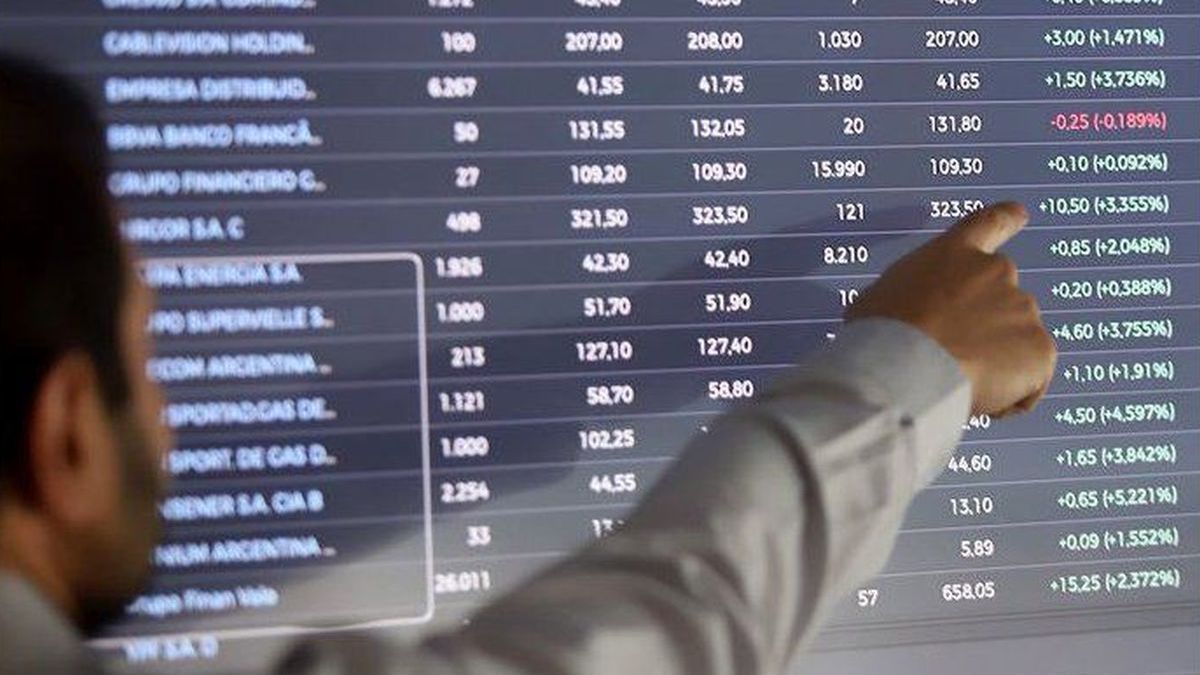For their part, hard currency bonds stopped bleeding and, in some cases, ended with green signs in the third month of the year, which made it possible for the country risk to register its first monthly drop in 2022.
Largely driven by the sharp drop in the CCL dollar (-5%), and at times conditioned by the volatility of global markets in the face of the war between Russia and Ukraine, the leading BYMA index climbed almost 9% in hard currency during March to 478 points, the highest since February 2020, while in pesos it rose 3.4% to 90,99.59 units.
So far this year, the Stock Market is up almost 14% in dollars and 7.3% in pesos. “Unlike what happened in the North American markets, which only managed to close a month in positive territory in March, the local market shares had an outstanding first quarter”, indicated Maximiliano Donzelli, Head of Research at IOL investonline.
Regarding the monthly performance in pesos of Argentine stocks, the highest increases were led by Cresud (+23.5%), Transportadora Gas del Sur (+14.1%) and Sociedad Comercial del Plata (+13.6%).
However, the two most notable increases were registered in the general panel, with rises of up to 42%, as achieved by the agricultural company Carlos Casado, followed by the energy company Capex (+26.5%).
On Wall Street, Argentine stocks stood out with widespread increases: Cresud gained 25.6%; South Gas Carrier (+24.5%); Macro Bank (+19.9%); Telecom Argentina (+19%); and Ternium (+16.2%). YPF appreciated 14.9%, while the rest of the banks rose between 9 and 14%. Among the unicorns, Mercado Libre increased 5.6%, while Globant was the only one to close down (-4.3%), after suffering a hack.
The most important event that had a direct impact on the local market was the approval, both by Congress and the IMF, of the technical agreement between Argentina and the international organization to refinance the US$45 billion Stand-by loan agreed in 2018 After making the pact official, the Argentine Government received the first disbursement for an amount of US$9.8 billion, which allowed it to meet March maturities for an amount of US$2.8 billion, and thus avoid default.
This Thursday, meanwhile, the S&P Merval gained a slight 0.1% due to the actions of institutional investors who sought to level portfolios at the close of March and the first quarter of the year, together with prudent liquidity in the face of domestic and global conditions.
The International Monetary Fund (IMF) and the Government have been “clear” about the exceptionally high risks facing the country’s economy and a recently approved new $45 billion agency program, Fund spokesman Gerry Rice said Thursday.
“It is not surprising that the risks for the Argentine economy and, therefore, for the program are high,” the spokesman said, noting that the IMF will work closely with the Argentine authorities to ensure the successful implementation of the program.
Argentina is recovering after three years of recession amid persistently high inflation, subject to the global shock caused by the war in Ukraine.
Argentina’s agreement with the IMF requires positive real rates against inflation, which is why traders and analysts said in a recent Reuters poll that a new increase in bank yields is very possible for April.
Bonds and country risk
In the fixed income segment, dollar bonds ended mixed in the third month of the year, despite the closing of the agreement with the IMF.
Analyzing by terms, the best performances were observed in bonds with shorter maturities (2029 and 2030), which rose between 2.1% and 0.5%. For their part, the longer terms, in the best case 0.3% (AL35D) and a slight 0.1% (AL41D) were observed.
Bonds that traded at a loss during March were the Global 2035 (GD35D), with a fall of 0.5% and the Bonar 2038 (AE38D), which lost 2.5%.
Consequently, the country risk prepared by the JP. Morgan bank fell by 4.6% to 1,732 points throughout March.
For the peso segment, inflation-adjusted bonds (also known as CERs) They ended the month with general increases, given the acceleration of the CPI for February (4.9%), a figure that was known in mid-March.
Among the bonds with the best returns, stood out the Pair (+9.5%); the Boncer 2028 (+7.7%); and Consolidation (PR13, which gained +7.5%).
Meanwhile, dollar-linked donations closed with increases, although to a lesser extent, close to 3%.
Source: Ambito
David William is a talented author who has made a name for himself in the world of writing. He is a professional author who writes on a wide range of topics, from general interest to opinion news. David is currently working as a writer at 24 hours worlds where he brings his unique perspective and in-depth research to his articles, making them both informative and engaging.




